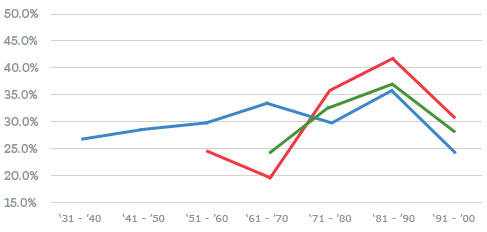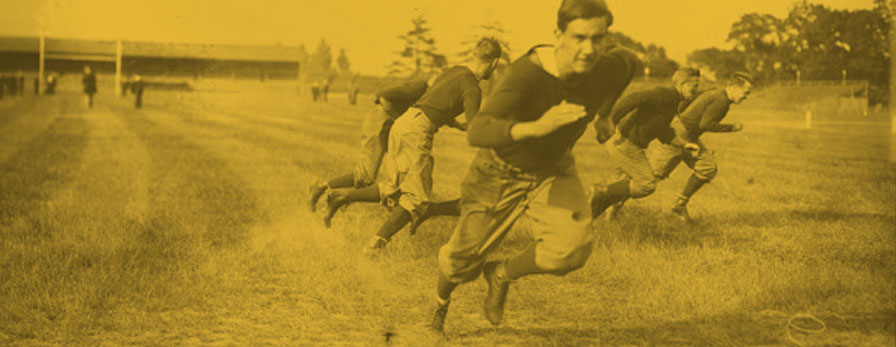Looking at individual NCAA sports in each of the three divisions, here are the ones in which there have been the most (>50%) and the fewest (<20%) repeats, excluding sports that have awarded national championships in fewer than 20 seasons:
Percent of Repeat National Champions by Sport and Division

On the surface, it would seem that in the sports with the higher percentage it would automatically be easier to repeat. But the last column, “# Repeaters,” shows how many teams have achieved that feat. So even though 32 of the 37 Division III men’s swimming and diving teams have been repeat national champions, those 32 repeats have been achieved by only two schools, with Kenyon at a streak in 2010 of 31 straight national championships. So while the percentage of a repeat is high for them, for other teams it’s a tougher road because they have to compete with Kenyon’s dynasty for the title.
Finally, is repeating becoming easier or harder? Over the last few decades, Division I was steadily climbing, and Divisions II and III had pretty immediate success when they were formed. All three divisions peaked in the 1990s, averaging between 35% and 45% repeats, but that percentage dropped pretty dramatically in the 2000s.
Percent of Repeat National Champions by Decade and Division





